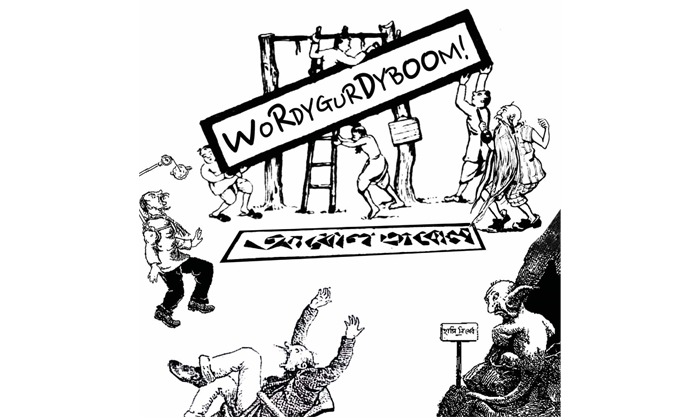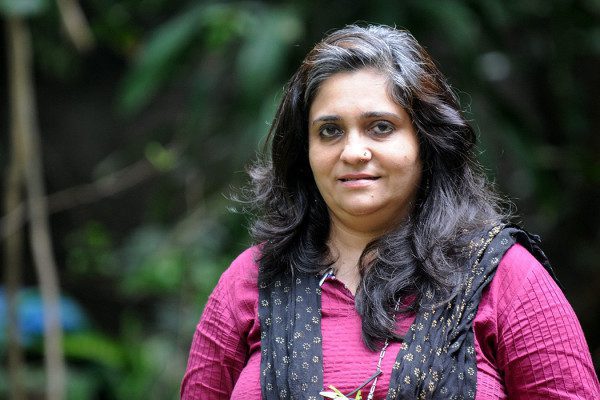(A translator’s first hand take on the joys and woes of translating other people’s imaginations)
I’d like to briefly examine some of the challenges of translating poetry via the work done by modern Indian poets pursuing personal obsessions—Ranjit Hoskote’s translation of the Kashmiri mystic Lal Děd, Mustansir Dalvi’s translation of Iqbal’s Shikwa & Jawaab-e-Shikwa, Mani Rao’s translation of the Bhagavad Gita, and my translation of Sukumar Ray.
Ranjit began translating Lalla at the age of almost twenty-two—the book came out twenty years later—because “she provided a connection to an ancestral past, to a homeland and a language” he had lost. Mani was reading the Gita in Sanskrit for her own edification (saadhana), when certain doubts made her turn to existing translations, reading which she “felt disappointed, the original so lively, the translations so stiff!” “One thing led to another” and she ended up translating the Gita, a text she confesses she’d never imagined engaging in “an intimate and enduring conversation with”. Mustansir was drawn by the “rousing words of Iqbal’s poetry, especially when read aloud,” the way they hit you “at a gut level”. As for me, I plunged into translation simply to see if I could bring into English the bounce, the limberness, the wise-crackery, tomfoolery, profundity and endlessly-inventive wordplay of Sukumar Ray’s Abol Tabol which I had loved since childhood.
Translators, when talking about translation, tend to resort to metaphor. A mosaic, a Persian rug seen from the back in which “the pattern is apparent but not much more” (Robert Bly), the same melody played by a different instrument…. I decided to resort to specifics. What, I asked these poet-translators, were some of the tricky issues they faced, what were the rules they imposed on themselves, what frustrations, intentions, satisfactions?
I knew mine. When translating Sukumar Ray I wanted, above all, to conjure the effect the original poems have on the eardrum, the grey cells, the funny bone. The naming of characters, onomatopoeia and puns were matters I resolved by trusting instinct allied with an affinity for rhyme. I sought English counterparts that would have the same impact rather than the same meaning. If the Bengali wordplay depended on multiple meanings, I looked for an equally versatile English word. Ditto for uniquely Bengali idioms. I maintained the rhyme schemes because they came naturally, read seamlessly. Mustansir, in his translation of Iqbal, abandoned rhyme, a conscious decision in order to convey the spirit rather than the form. Mani began by articulating her own “expectation norms” which she derived from the original. “The style is the spoken word… what is the tone and dramatic emphasis in each verse, what is the cognitive unit at every instance – is it a word, a line, a set of stanzas?”— these were some of the questions she kept in mind. She had to figure out “how to be flexible, and open to using different solutions for different problems” and the flow was “the result of logic and structure”. One problem she “enjoyed solving was that of atman/soul – i.e., how not to use the word ‘soul’ to translate ‘atman.’” Mustansir’s primary rule was—“the poems have to stand on their own in English.” He made choices based on the context of the poems and the period in which they were written. Ranjit’s intent was “to strip away a century of ornate, Victorian-inflected renderings and paraphrases, and to disclose the grain and tenor of Lalla’s voice, the orality, vocality and spokenness of her poems.”
What is striking about the works I mention is the degree to which they succeed not just as translations but as poetry. Mustansir’s Iqbal, Mani’s Gita, Ranjit’s Lalla are luminous, infused with the beauty and contemporaneity one might expect from translators who are also gifted poets. There is ownership here, there is passion, and precision. Mani Rao’s Bhagavad Gita is a poem in which her own poetics kick in to create a text of startling newness. In her introduction she writes, “The Gita is not only a poem, it is a love poem. May fidelity, then, be deep, complex and lively.” Many may take umbrage at the liberties taken, even dislike the results, but taking liberties restores to the translation the energy of the original, in ways that are truer, more alive, more mysteriously akin to the source than bland literalness.
I have been translating Joy Goswami’s poetry for the past eight years, discussing it with him as I go along, something I couldn’t do with Sukumar Ray! Joy-da achieves mischief and melancholy with the deftest of strokes, his lines caper, confound, skewer you through the heart or simply hurtle into a fourth dimension. The alertness he demands from his reader is doubled when that reader happens to be a translator. Sometimes a single word conveys a world of cultural references impossible to bring into English without sinking the poem. His Bengali poetry pushes me to—and beyond—the limits of what I thought I could do in English. Perhaps this is what Eliot Weinberger meant when he called translation “a form of listening that then changes how you speak.”
Mani is currently translating Kalidasa; Priya Sarukkai Chabria, in collaboration with the US-based poet Ravi Shankar, is in the sixth year of translating the ninth-century Tamil saint-poet Aandaal, a venture she refers to as “an act of faith”, an attempt “to bring to light numerous flowing undercurrents.” In his essay A Rose by Any Other Name Umberto Eco writes, “Thank God I am not a poet, because the problem becomes more dramatic in translating poetry.” I can only consider myself fortunate to be part of a polyphony of poets taking on the ‘dramatic problem’ of translating poetry from other Indian languages into English despite, or perhaps because of, the complex challenges and private pleasures involved.


